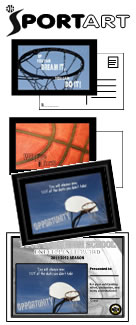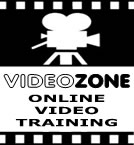 In today's basketball game, the job of a forward has been broken down into two categories: small forward and power forward. Each position has slightly different demands and skill sets. Usually, a power forward is bigger than a small forward, but the small forward handles the ball better. In today's basketball game, the job of a forward has been broken down into two categories: small forward and power forward. Each position has slightly different demands and skill sets. Usually, a power forward is bigger than a small forward, but the small forward handles the ball better.
TYPES OF FORWARDS
Small Forward
Just because they're called "small" forwards doesn't necessarily mean they are actually physically small. They're known primarily for their scoring and ball handling abilities. This position is usually handled by the most talented player on the court.
Power Forward
Also can be called a "big" forward, these players are usually a bit bigger and stronger than other players and known for their size, defense and rebounding. Sometimes, power forwards like Karl Malone or Charles Barkley are also known for scoring a lot. Most, though, are best known for being their team's best rebounder or defender.
Center
This basketball position is very important to both the offensive and defensive sides of the ball. Centers are usually the tallest players on the court and are often the focal point of their team's offense. A center's duties are just as important on defense. They have to defend the opponent's center (who can also be a monster player) as well as block shots and rebound.
Defending Someone Bigger than you
There will be times that you will be defending someone much taller, bigger, stronger than you. When this happens, you must outsmart them and you must use your advantages as a smaller player. When battling for post position, get low! You are much stronger the lower you are. If he is still pushing you back, then use your quickness to beat him to the ball. If he gets too low of post position, front him. There have been many successful forwards in the NBA that were 6’8” rather than 7’ and dominated the rebounds. How did they do that? Positioning themselves and quickness to the ball.
H O O P E R X O F F E N S I V E XXF O R W A R D X T I P S |
BE A TEAM LEADER
A Great forward is a leader by example in practice, in conditioning, and all aspects of training. They do not walk through the motions some days, and attempt to bring their "A" game to the top level with inconsistent practice methods and intensity. The greatest post players are nasty to play against every single day, bumping and grinding. You hate to play against them but you love them on your team!
BE STRONG YET SOFT
A Great Big Man has both soft hands and strong arms. The ball lands on their finger tips like a butterfly to a flower but sticks like velcro to...velcro. This comes from well developed finger strength, good hand-eye coordination, and excellent techniques in keeping the elbows pointed out to press the ball inward.
USING THE BACKBOARD
A post player should use the backboard when scoring to reduce the effectiveness of the shot blocker. Shooting high "off the glass" also creates higher percentage shots by increasing your room for error in close quarters.
BE PATIENT
A forward should catch the ball and wait a split second to survey the court, to see how the individual and team defense will react to the low post pass. One thing I teach is to look where your defender is located, left hip, right hip, and plan your move accordingly.
THE JUNK HOOK
The jump hook is executed just as you would a regular hook shot. The differences are that you jump when you shoot the hook shot. The ball is brought up higher and closer to the body and you flick the shot without using the arm.
THRIVE ON PHYSICAL PLAY!
A great post player does not belly-ache about not getting the ball down low. They work so hard and efficiently that it is totally obvious to their teammates they are open and can score. If one "moment of opportunity" is missed they don’t sulk and quit playing, they remain hungry and continue to work for the "next moment of opportunity" when it comes.
STAY ACTIVE
Great post players stay active to force their defender to respect and defend each position on the court as a possible scoring threat position following each pass whether they are at the strong side low post, weak side, or high post.
FREE THROWS
Great post players can make their free throws because they know they will be fouled and most likely to go to the foul line over the course of a season more than any other player or position. Post players should thrive on wanting to get fouled and get to the line.
BE A GOOD PASSER
Great post players can pass off the dribble. By this I mean once they have put the ball on the floor during a post move, they have the skills to immediately pick up the ball, center it and pass it back out to an open perimeter player, teammate cutting freely toward the basket, or with ease back to the person who entered the post pass.
PASSING IN AND OUT
A great post player is neither a "black hole" nor a "automatic toss-back machine" when the entry pass is made. They recognize scoring opportunities but also see when a pass-out is necessary, either because of a double team, or to get better post position for themselves. Trust in your teammates.
OWN THE BOARDS
Forwards are extremely active on the offensive backboards. They are relentless, with the scent of a bloodhound for the loose offensive rebound, and desire the loose ball more than anything.
CHINNING THE BALL
Great post players keep the ball tucked under their chin, keeping the ball in a position of strength. The only time the ball comes down is a low-explosive-power dribble into an open space behind a defender. The time the ball is low and exposed is very limited in great post players. The same technique is used after grabbing a defensive rebound. Chin the ball until you find a good passing lane to one of your guards.
LEVERAGE
Leverage Is Vital! Leverage is gained by foot and body movement and contact. Footwork is one of the hardest things to teach because it is not natural. Toes and shoulders should be pointed at the ball. Sit on the defender's thigh - the post's center of gravity is thereby lower than the defender's and this makes the post stronger. If the defender steps around in front of the post's foot, the post should step over the top of the defender's foot. If the defender attempts to go behind the post, the post keeps the defender behind him by maintaining contact with the defender.
THE WIDER THE BETTER
Keep the knees bent - make yourself a “wide” target. DO NOT stand up straight. We want the lower body low - the feet wider than the shoulders. The post player should show his numbers to the passer and hold his hand out to give an aggressive target. Show the passer where you want the ball and if the passer is any good, he will get it to you there.
LOW POST POSITIONING
When you are on offense in the low post you need to make the defense play you on just one side. The offense wants to keep contact with the defense and once he has established his defensive position, pin him there and make him stay where he is. Be big and wide and always give a "target hand" so your teammate knows where to pass the ball. Use your hips.
KEEP IN CONTACT
Prevent or inhibit movement by the defense by keeping contact with the defender with hips and legs. This is called ‘pinning” the defense. The post must get at the defender's legs; he cannot allow the defender to get at the pass.
KNOCK IN
When you are side-fronted by a defender's arm, knock the defender's arm away by raising BOTH your arms (totally legal) toward the ball and stepping over the defender's top foot. Knock the defender's arm away from below by raising your arms, not pushing-off (illegal).
H O O P E R X D E F E N S I V E XXF O R W A R D X T I P S |
BE TOUGH
Great post players take the hits, bumps as they come and play through it. They have great upper and lower body strength and can take hits and punishment without losing the ball. Able to maintain possession in traffic, take a foul, and complete the play. If you do not like contact don’t play this position.
SEAL OFF DEFENDERS
A Great Big Man knows how to use their back side to position and seal off defenders from getting good defensive position. Not only that but they are intelligent enough and skilled enough to bait even the best defenders into fighting for a seemingly desired position, only to gain a better offensive position and chance of scoring from a more effective angle or position near the basket.
SPRINT THE COURT
A Great Big Man hustles back on defense in transition and never lets either the post player they are defending beat them up the court. Sprinting back every single time enables early transition defenders to keep pressure on the ball reducing rapid ball movement. This sprinting set the post players tone for the defensive set.
HIDING BEHIND DEFENDERS
A good post player knows how to hide behind defender's eyes, make them turn their heads, and wonder where they are. Staying active does not mean just constantly moving with high energy for no purpose. It means playing an active chess game with their individual, and against an inspired team defense to find those "moments of opportunity".
TALK ON DEFENSE
Great post players talk on defense, calling out screens well before they are set and adjustments when the angle or location of a screen changes. They also keep light on their feet and active to show and release, or trap on tough perimeter pick and roll screens. Communication is the key to teamwork!
DEFEDNING A GREAT POST PLAYER
There will be times that you will be defending someone much taller, bigger, stronger than you. When this happens, you must outsmart him and you must use your advantages as a smaller player.
Time to get to work,
Coach O
|





 In today's basketball game, the job of a forward has been broken down into two categories: small forward and power forward. Each position has slightly different demands and skill sets. Usually, a power forward is bigger than a small forward, but the small forward handles the ball better.
In today's basketball game, the job of a forward has been broken down into two categories: small forward and power forward. Each position has slightly different demands and skill sets. Usually, a power forward is bigger than a small forward, but the small forward handles the ball better.